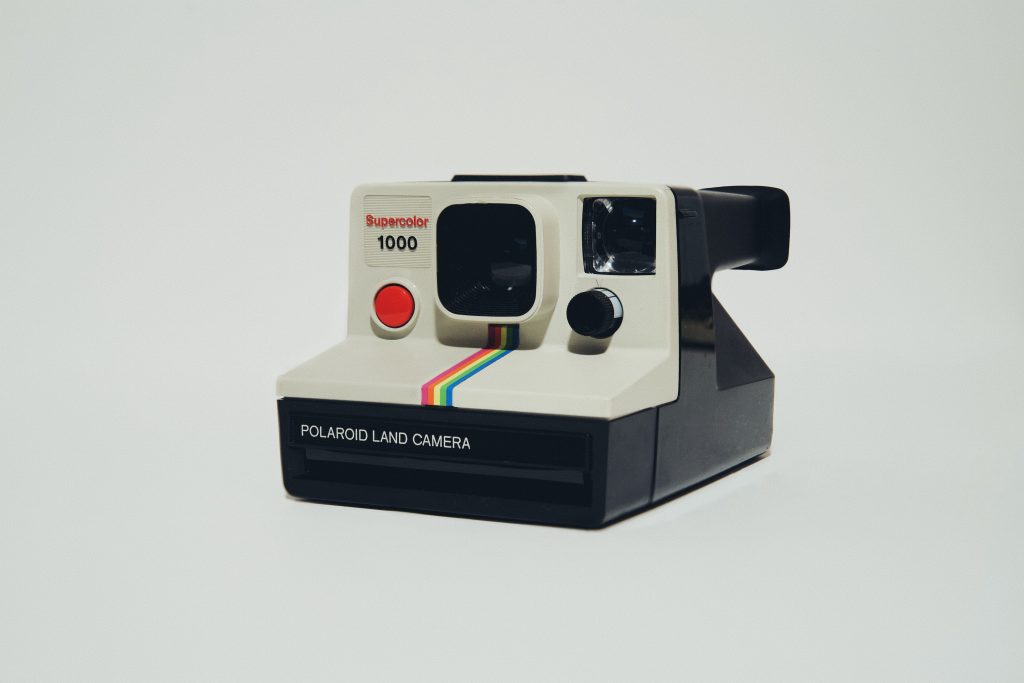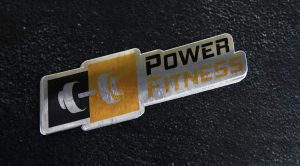Are you a fan of vintage design? Do you find yourself drawn to the bold colors, geometric shapes, and artistic experimentation of the 1970s? If so, you’re not alone! The 1970s was a pivotal era in graphic design, characterized by an explosion of creativity and innovation. Logo designers of the time embraced creative freedom and innovative techniques, resulting in some of the most iconic logos of all time.
From trippy brights to stripped-back geometrics, the best logos of the 1970s continue to inspire designers and industry experts today. Whether you’re a graphic designer looking to incorporate retro elements into your work or a fan of vintage design, the logos of the 1970s offer a wealth of inspiration and creativity. In this article, we’ll explore the evolution of 1970s logos, from groovy to timeless, and take a closer look at some of the most iconic logos of the era. So sit back, relax, and let’s take a trip back in time to the world of 1970s design!
The Rise of Iconic 1970s Logos
In the 1970s, logo design experienced a significant shift in style and approach. The era was marked by bold colors, playful typography, and psychedelic patterns, which were reflected in the logos of the time.
One of the most significant changes in logo design during this period was the use of abstract shapes and symbols. Logos became less about representing the product or service and more about creating a unique and recognizable brand identity.
The iconic logos of the 1970s were not just about aesthetics; they were also a reflection of the cultural and social changes happening at the time. The rise of feminism, environmentalism, and civil rights movements influenced the design of logos, with many companies adopting more socially conscious and progressive branding.
Some of the most famous logos of the 1970s include the Nike swoosh, the Apple logo, and the Coca-Cola logo. These logos have stood the test of time and are still recognized and beloved today.
The 1970s was a decade of experimentation and innovation in logo design. It was a time when designers were given the freedom to explore new ideas and push the boundaries of traditional branding. The result was a collection of iconic logos that continue to inspire and influence designers to this day.
Impact of Pop Culture on 1970s Logos
The 1970s was a decade of change, and pop culture played a significant role in shaping the era’s logos. From music to television to fashion, popular trends influenced the design and style of logos during this time.
Music Influence
The rise of disco music in the 1970s had a significant impact on the logos of that era. The bright colors, bold patterns, and funky shapes of disco music inspired designers to create logos that were equally vibrant and eye-catching. Logos for disco clubs, record labels, and music festivals often featured neon colors, glitter, and bold typography. The iconic logo for Studio 54, one of the most famous disco clubs of the era, features a bold, geometric design that captures the energy and excitement of the disco scene.
Television Impact
Television was another major influence on 1970s logos. The rise of television sitcoms and dramas led to a demand for logos that could capture the essence of these shows. Logos for popular shows like “Happy Days,” “Charlie’s Angels,” and “The Love Boat” often featured bright colors, playful typography, and images that reflected the show’s themes and characters. The logo for “Charlie’s Angels,” for example, features three silhouettes of the show’s main characters, capturing the show’s focus on female empowerment and action.
Fashion Trends
The fashion trends of the 1970s also had a significant impact on logos of that era. The decade was known for its bold, colorful, and eclectic fashion, and logos reflected this style. Logos for fashion brands, clothing stores, and even car manufacturers often featured bright colors, bold typography, and patterns inspired by the era’s fashion trends. The iconic logo for the Volkswagen Beetle, for example, features a bold, rounded font and a playful, colorful pattern that captures the spirit of the 1970s.
In conclusion, the pop culture of the 1970s had a significant impact on the logos of that era. From disco music to television to fashion, popular trends influenced the design and style of logos during this time. The result was a vibrant and eclectic mix of logos that captured the energy and excitement of the era.
Noteworthy 1970s Company Logos
https://www.youtube.com/watch?v=KcAZu3ptqi4&embed=true
If you take a closer look at the 1970s, you will notice that it was a golden era for logo design. Many companies at the time took advantage of the bold, vibrant, and unconventional design trends to create memorable logos that still resonate with people today. Here are some noteworthy 1970s company logos that stood out from the rest:
Automotive Industry
The 1970s was a decade of change for the automotive industry, as it was marked by the oil crisis, stricter emissions regulations, and the rise of Japanese car manufacturers. Despite these challenges, some car companies managed to create iconic logos that are still recognizable today. Here are a few examples:
- Ford: The Ford logo underwent a significant change in 1976 when the company introduced a new emblem that featured a blue oval with the word “Ford” in white capital letters. This logo is still in use today and has become synonymous with the brand’s reliability and durability.
- Chevrolet: In 1971, Chevrolet introduced a new logo that featured a blue bowtie with the word “Chevrolet” in lowercase letters. This logo has since become one of the most recognizable symbols in the automotive industry.
- Volkswagen: The Volkswagen logo has remained relatively unchanged since the 1950s, but it became even more popular in the 1970s when the company introduced the Volkswagen Beetle, which quickly became an icon of the decade.
Technology Sector
The 1970s saw the birth of the personal computer, which paved the way for the modern technology industry. Many of the logos created during this time reflected the futuristic and innovative nature of the industry. Here are a few examples:
- Apple: In 1977, Apple introduced its first logo, which featured a multicolored apple with a bite taken out of it. This logo has since become synonymous with the brand’s creativity and innovation.
- IBM: The IBM logo underwent a significant change in 1972 when the company introduced a new emblem that featured the letters “IBM” in a bold, italicized font. This logo is still in use today and has become synonymous with the brand’s reliability and professionalism.
- Microsoft: In 1975, Microsoft introduced its first logo, which featured the word “Microsoft” in bold, uppercase letters. This logo has since undergone several changes, but it still reflects the brand’s commitment to innovation and technology.
Food and Beverage Industry
The 1970s was a decade of experimentation and innovation in the food and beverage industry, as companies introduced new products and flavors to appeal to a wider audience. Many of the logos created during this time reflected the bold and colorful nature of the industry. Here are a few examples:
- McDonald’s: In 1968, McDonald’s introduced its iconic golden arches logo, which quickly became synonymous with the brand’s fast food offerings. The logo underwent a few changes in the 1970s, but it still remains one of the most recognizable symbols in the world.
- Coca-Cola: The Coca-Cola logo has remained relatively unchanged since the 1880s, but it became even more popular in the 1970s when the company introduced its “I’d Like to Buy the World a Coke” campaign. This campaign featured a catchy jingle and a memorable logo that reflected the brand’s commitment to unity and happiness.
- Pepsi: In 1973, Pepsi introduced its iconic “Pepsi Globe” logo, which featured a wave-like shape and dynamic colors. This logo reflected the brand’s commitment to pushing boundaries and standing out from the competition.
Design Elements of 1970s Logos
The 1970s was a decade of bold and experimental graphic design, characterized by a wide range of design elements that are still relevant today. In this section, we will explore some of the key design elements that defined 1970s logos.
https://www.youtube.com/watch?v=Q0Avejd3VmM&embed=true
Color Usage
Color was a crucial element of 1970s logos, with designers often opting for bold and bright hues that reflected the era’s vibrant and rebellious spirit. Some of the most popular colors used in 1970s logos include mustard yellow, orange, brown, and green. These colors were often used in combination with each other, creating a striking and eye-catching effect.
Typography
Typography was another key element of 1970s logos, with designers experimenting with a wide range of fonts and styles. Bold, chunky fonts were particularly popular, often featuring thick serifs and a slightly retro feel. Many designers also incorporated custom lettering into their logos, adding a personal touch and a sense of individuality.
Shapes and Symbols
Geometric shapes and symbols were a common feature of 1970s logos, with designers often incorporating circles, triangles, and other shapes into their designs. These shapes were often used in combination with bold typography and bright colors, creating a dynamic and visually striking effect. Many logos also featured symbols that reflected the era’s cultural and political movements, such as peace signs, hearts, and stars.
In summary, the design elements of 1970s logos were characterized by bold colors, experimental typography, and geometric shapes and symbols. These elements continue to influence graphic design today, making the 1970s a pivotal era in the history of logo design.
Legacy of 1970s Logos
The legacy of 1970s logos is undeniable. The bold and experimental designs of the era still inspire logo designers today. Here are a few reasons why:
Bold Colors
One of the defining characteristics of 1970s logos was their bold use of color. Bright oranges, yellows, and greens were popular choices, often paired with contrasting shades of blue or purple. This bold color palette helped logos stand out and grab attention, and it’s still a popular choice for brands looking to make a statement.
Geometric Shapes
Geometric shapes were another hallmark of 1970s logos. From circles and triangles to squares and diamonds, logos of the era often featured bold, simple shapes. This gave logos a clean, modern look that still feels fresh today.
Psychedelic Graphics
The counterculture movements of the 1970s had a big influence on logo design. Psychedelic graphics, with their swirling patterns and bright colors, were a popular choice for many brands. While this style may not be as prevalent today, it still has a devoted following and can be seen in some modern logo designs.
Timeless Design
Perhaps the biggest legacy of 1970s logos is their timeless design. Many logos from this era still look fresh and modern today, decades later. This is a testament to the innovative techniques and creative freedom that logo designers embraced during the era.
Overall, the legacy of 1970s logos is one of boldness, experimentation, and timeless design. It’s no wonder that these logos continue to inspire designers today.
Barry Edwards is a digital marketing expert with a deep understanding of content strategy, logo, and branding principles. Holding a Bachelor’s degree in Marketing from Beaconhill College, he offers valuable insights on digital marketing trends and strategies through his writing. Follow Barry’s work to stay updated on the latest in online marketing and branding.



